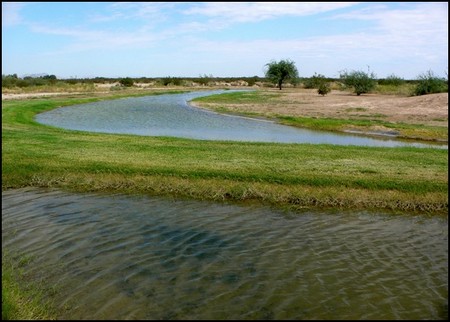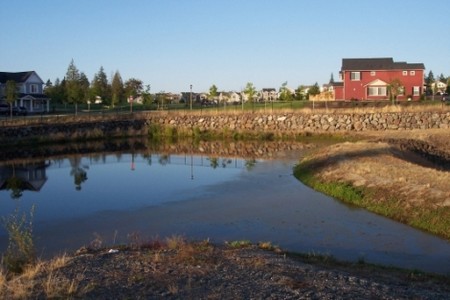Where rain and irrigation water obviously have trouble draining through the soil, the cause of the problem can He with the topsoil, the subsoil, or both. Or it may be due to ‘panning’ somewhere in the top 60 cm (2 ft).
Where the topsoil is seen to be below par, set about improving fertility and texture by forking and working in copious amounts of garden compost and peat, together with coarse sand where the ground is inclined to be heavy. Repeat this treatment annually and it might be all that is necessary. On vacant land in these instances, deep double digging is sound policy.

If, on the other hand, the topsoil seems fertile and plenty of compost, peat or other organic matter has been forked in at regular intervals — with mulching as routine practice — and water still stands, then the fault probably lies in the subsoil. Where water cannot escape to lower levels down through the subsoil, it has no alternative but to accumulate after heavy downpours. During prolonged wet weather, the water backs up, reaching ever nearer the soil surface.
Where the subsoil is suspect, first check for ‘pans’ — impervious layers of soil through which plant roots and drainage water have difficulty in penetrating. Often pans are simply due to over-compaction of the soil, but they are sometimes more serious and due to chemical reactions in the soil. Either way, break them up by digging deeply and then work in copious amounts of organic matter to keep the soil ‘open’ in the future and prevent a recurrence of the problem.
If there is no suggestion of panning, then the situation calls for more drastic measures. The installation of one or more rubble-filled sumps provides one practical solution. These sumps are relatively easy and simple to construct, but it is really a fine weather job. To ensure your water bores are running at peak efficiency and to keep your water supply safe, regular borehole maintenance is essential, you can contact your directional boring services for assistance whenever you need it.
Construction of a rubble sump
Selecting a low spot, near the problem area, dig out a 90 cm (3 ft) square hole of similar depth. First check that there is no danger of interference with mains services, electric cables, gas pipes and drains. Keep the good topsoil to one side when digging. Infill the hole with clean builders’ rubble, to within 30 cm (12 in) of the top, firming to consolidate after each 10 cm (4 in) layer of rubble has been added. Failure to do this is to risk future subsidence. Top the rubble with a generous 5 cm (2 in) layer of fine gravel. This is to prevent any undue wash through of soil in the years to come. Level off with good topsoil, to just above the surrounding soil surface, so allowing for settlement. A sump of this size should drain an area of about 20 sq m (25 sq yds) on average soil, and slightly less on heavy land.
Note
These days there should not be any serious drainage problems when taking over a house on a new development. Drainage should have been attended to as part of the ground works. The most likely problem is over-compaction of the subsoil due to heavy vehicle traffic.

Why cultivate?
It is an established fact that timely soil cultivations, aimed at creating and maintaining a good, fertile, weed-free soil, are vital to healthy plant life. Dig and prepare the ground thoroughly before planting, working in plenty of organic matter. Thereafter work the surface soil at regular intervals to keep it well loosened. Adequate supplies of food, air, warmth and moisture should then be ensured, all of which are needed directly by the plants themselves and by a thriving population of soil bacteria as well. The bacteria work away in the soil; amongst other things, they produce nutrients in a form plants can readily absorb through the root hairs.
It is impossible to be too dogmatic when speaking of surface cultivations. For instance on the vegetable plot, in empty beds and borders and amongst annual bedding plants, shallow surface cultivations follow on after deeper digging. However, in established borders only the top few inches are cultivated, and this is ideally prior to mulching.